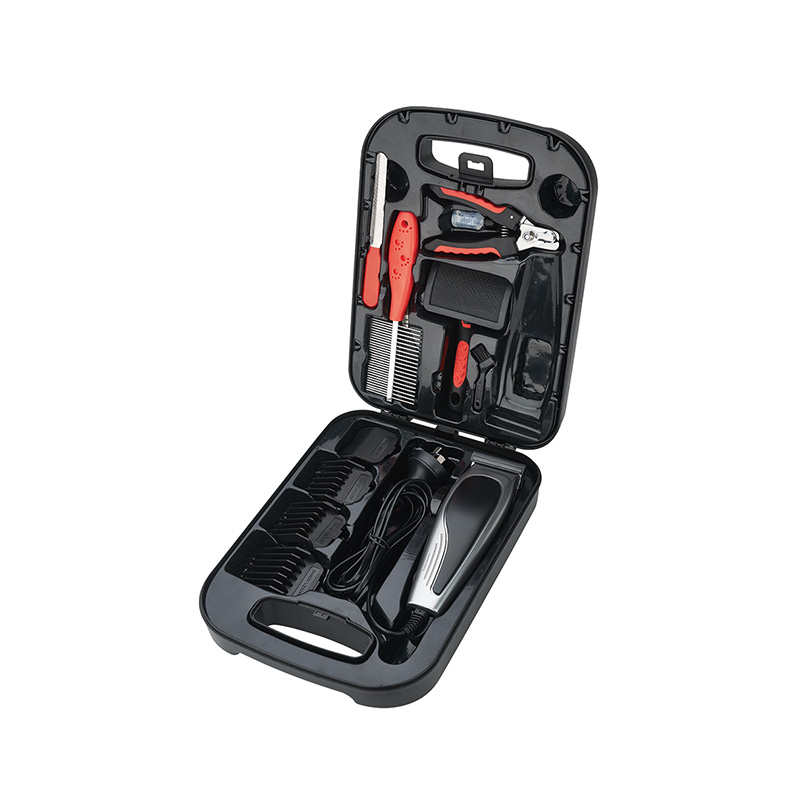 2025.08.15
2025.08.15
 Industry News
Industry News
Power Consumption and Its Connection to Heat Generation
When choosing a Pet Electric Clipper, one of the overlooked factors is how the power level relates to heat production during extended grooming. Lower-powered clippers often produce less heat but tend to struggle with denser fur, forcing the motor to work harder and causing potential overheating. On the other hand, high-powered models are designed for more demanding tasks and can handle heavy use better, but they naturally generate more heat due to stronger motors and faster blade movement. In either case, poor heat dissipation design, such as inadequate venting or lack of thermal insulation, can accelerate surface heating and impact comfort for both the pet and user.

Overload Concerns in Prolonged or Improper Use
Overload occurs when the motor is pushed beyond its capacity, often from trying to cut thick, matted fur or from continuous operation without breaks. In low-power clippers, this is more likely to happen quickly, as the motor lacks the torque to sustain long grooming sessions. This can cause the motor to slow down, stall, or, in some cases, burn out. Even higher-powered units can experience overload if improperly used, particularly if the blades are dull or clogged with hair. The result is not just reduced performance, but also a significantly shorter lifespan of the device. Some clippers include built-in overload protection systems that automatically shut off the motor under stress, but not all models offer this safeguard.
Impact of Blade Type and Material on Heat Buildup
The blade material plays a crucial role in whether a clipper overheats during use. Stainless steel blades, common in many consumer-grade clippers, conduct heat easily and can become uncomfortably hot during long sessions. Ceramic blades, however, remain cooler for longer, making them ideal for pets with sensitive skin or for professional grooming where tools are used continuously. Blade sharpness also matters—dull blades require more motor effort to cut hair, causing increased resistance and higher internal temperatures. A well-maintained blade not only cuts more efficiently but also reduces overall strain on the motor.
Cooling and Ventilation Design Features
Modern clippers address heating and overload challenges through cooling-focused design elements. Some incorporate vent slots or internal fans to manage temperature, especially in professional-grade equipment. Others rely on high-efficiency motors that produce less waste heat while delivering consistent cutting power. Heat-resistant housings and ergonomic grips also help reduce the transfer of warmth to the user’s hand. These features, while often reserved for higher-end models, can make a significant difference in reducing both thermal discomfort and the risk of mechanical stress over time.
Practices for Avoiding Overheating and Overload
To reduce heating and overloading issues, several user habits are essential. Clippers should be cleaned and oiled regularly to reduce blade friction. Grooming sessions should be paused intermittently, especially when trimming thick coats, allowing the motor and blades to cool. Matching the clipper’s power level to the pet’s coat type is also critical—a low-wattage device may suffice for short-haired pets but will struggle with breeds like Huskies or Poodles. Additionally, using proper grooming techniques, such as moving with the direction of hair growth and avoiding excessive pressure, can prevent unnecessary strain on the clipper’s motor.
Performance Depends on Power, Design, and Usage
While all grooming tools are susceptible to some degree of heat buildup, whether a clipper overheats or overloads depends on its motor strength, blade quality, internal cooling, and how it's used. A thoughtfully chosen device with the right combination of power and design can perform reliably without frequent overheating or mechanical stress. By understanding these factors and following practices, pet owners and professionals can ensure safer, smoother grooming experiences without interruptions.